The wrack line is that “line” of organic material that ends up on beaches when tides go back out. It is a biologically important micro-ecosystem of seaweeds, crustaceans, shells, decaying birds and fish and mammals. When I need to think, I walk the wrack line. The idea for this environmental series comes from those walks; walks that for the past two years have conjured up all sorts of topics for me. Many are worthy of many books. It is a simple walk I conduct on a calm, mostly sandy, and driftwood-strewn beach in Central Oregon. The solitude allows some of my own decades studying environmental harms to both animals and plants to filter through my thoughts. For this short essay, the topic is conventionally grown potatoes, which are now grown largely as a monoculture product and have been found to contain 35 separate toxic chemicals.
The Potato Monoculture
I was just talking with an 80-year-old woman whose father’s side of the family, all 56 of them, were murdered in Germany’s death camps. She grew up in Chile, and alas, ended up Oregon. She is working on stopping the aerial spraying of 2-4-D and other weedicides onto the clear-cuts. She remarked at how insane the world is with so much lack of common sense and connecting of the dots when it comes to our factory/industrial food systems. She held up a potato:
“How did it ever become normal to use poisons on our food? Poisons that have a direct vector not just to your gut and mine, but to the developing guts and brains of fetuses?”
Oh, that potato! Originally from Peru, the potato has crossed oceans and ended up in every part of the globe.
Only two things in this world are too serious to be jested on, potatoes and matrimony.
—Irish saying.
Now, they are genetically engineered, and part of the monoculture that triggered the Great Famine, also called the Irish Potato Famine. Then, the Irish used a single breed of potato called the Irish Lumper. It was vulnerable to a fungus to which the breed had no resistance. Other cultures, farming practices over come this vulnerability by growing many different variety of each crop. The Peruvians, for example, grow many hundreds of varieties. The diversity of breed/varieties is what keeps a single fungus or other pests from decimating a food stock.

In the US, however, we grow only few varieties of potatoes, making them sensitive to all sorts of microbial threats and because we rely so heavily on chemical solutions for these threats, we have decimated the soils in which these crops grow. Many of the problems with conventional potatoes are tied to the fact the soil has been so eroded and robbed of nutrients, that there are no natural fungi or bacteria left. This means that ungodly amounts of chemical fertilizers have to be applied each season to contain the growth of super predator weeds and microorganisms. Each year, the amount of chemicals required increases.
But it’s the pesticides, man! Leave my spuds alone.
Just how many chemicals are there in a conventionally grown potato? According to the USDA’s Pesticide Data Program, conventionally grown potatoes carry 35 different pesticides. As is true of many of the plastic compounds, these pesticides have some lethal side effects:
- 6 are known or probably carcinogens
- 12 are suspected hormone disruptors
- 7 are neurotoxins
- 6 are developmental or reproductive toxins
One herbicide, chlorpropham, is used to stop the growth of weeds and to inhibit potatoes sprouting. Chlorpropham is found on up to 80 percent of all conventionally-grown potatoes. According to the Extension Toxicology Network, this poison is toxic to honey bees. In labs, tests bare out the effects of chronic exposure to the herbicide where the animals show “retarded growth, increased liver, kidney and spleen weights, congestion of the spleen, and death.”
Poison Potatoes
All those poisons, then, are integrated into the spud. As a root vegetable, potatoes absorb all of the pesticides, herbicides, and insecticides sprayed above the ground, which eventually spread into the soil. There are many insider testimonies from potato farmers — Jeff Moyer, CEO at the Rodale Institute and former chair of the National Organic Standards Board, says,
I’ve talked with potato growers who say point-blank they would never eat the potatoes they sell. They have separate plots where they grow potatoes for themselves without all the chemicals.
The potato is a great example of an industrial system gone crazy. Terms like Frankenfoods, fishy tomatoes and assassin seeds are not benign. Imagine, the now defunct DNA Plant Technology of Oakland, California, developed the gene therapy (sic) of inserting a fish gene into a tomato. It was the gene that helps a flounder survive in frigid waters. This “anti-freeze” fish gene was spliced into tomato cells to enhance the plant’s resistance to cold.
Monsanto, developers of the glyphosate-based herbicide Roundup, also developed the gene technology to create suicide seeds. Of all wonderfully bad things, they call this technology: Genetic use restriction technology (GURT), but it’s more commonly referred to as terminator technology or suicide seeds. This keeps farmers from saving seeds from a Monsanto crop, as the genetic alterations either activate or deactivate some genes only in response to certain stimuli. The second generation of seeds is infertile.
Roundup is what is sprayed all over our Oregon forests when clear cuts raze stands of trees – to keep opportunistic and invasive brush and other tree species, from overtaking the sawed over hills and valleys. (The Intercept)
The history and politics are not lost on people like my Chilean friend — Dow Chemical and Monsanto were the two largest producers of Agent Orange, a fifty-fifty mix of the n-butyl esters 2,4-dichlorophenoxyacetic acid (2,4-D) and 2,4,5-trichlorophenoxyacetic acid (2,4,5-T) known for a long list of neurological symptoms and physiological malformities found not only in those exposed but in their offspring; effects that were denied and ignored by both the manufacturer and the government, for decades.
Industrial Foods
The potato is just one food crop. Every conventionally grown crop contains multiple chemical pesticides and herbicides. There are many groups looking into industrial vegetables and fruits, but they all have their own version of the Dirty Dozen. The dirty dozen are the twelve most chemically laden fruits and vegetables for that year. These foods should be purchased organic when possible. Here, another group’s dirty dozen with some specifics connected to each food.
- Apples – at least 99 % have residue
- Strawberries – contained 13 different pesticides each
- Grapes- contained 15 different pesticides
- Celery- 13 different pesticides per sample
- Peaches
- Spinach
- Sweet Bell Peppers
- Imported Nectarines – every sample tested positive for pesticides
- Cucumbers
- Cherry Tomatoes – contained 13 different pesticides each
- Imported Snap Peas – contained 13 different pesticides each
- Potatoes – had more pesticides by weight than any other food
Remember, there are literally dozens of active ingredients in one type of herbicide. There are hundreds and sometimes thousands of chemicals in a scoop or pint of poison used in industrial agriculture. There are no studies on how any of these chemical interact with each other as they bioaccumulate in the soils, plants, animals or in us. There are no studies on how two, three, or four different chemicals might interact in the lab or in life, let alone 10, 15, or 35 as in the case of the potato. Although industry boasts the safety of these chemicals, no one with a modicum of common sense believes them, unless they choose too. As I walk the wrack line, I cannot help but agreeing with my Chilean friend. The world is insane to believe that it is normal to poison our food.
When we look at what is truly sustainable, the only real model that has worked over long periods of time is the natural world. – Biomimicry Institute founder, Janine Benyus.
To Learn More:
- “Monsanto Manipulates Science” from Food and Water Watch
- “Organophosphates: A Common but Deadly Pesticide” from Cornucopia
- Beyond Pesticides
Pesticides Industry: Sales and Usage by EPA
“Pest-Chemgrids” from Nature
We Need Your Help
More people than ever are reading Hormones Matter, a testament to the need for independent voices in health and medicine. We are not funded and accept limited advertising. Unlike many health sites, we don’t force you to purchase a subscription. We believe health information should be open to all. If you read Hormones Matter, like it, please help support it. Contribute now.
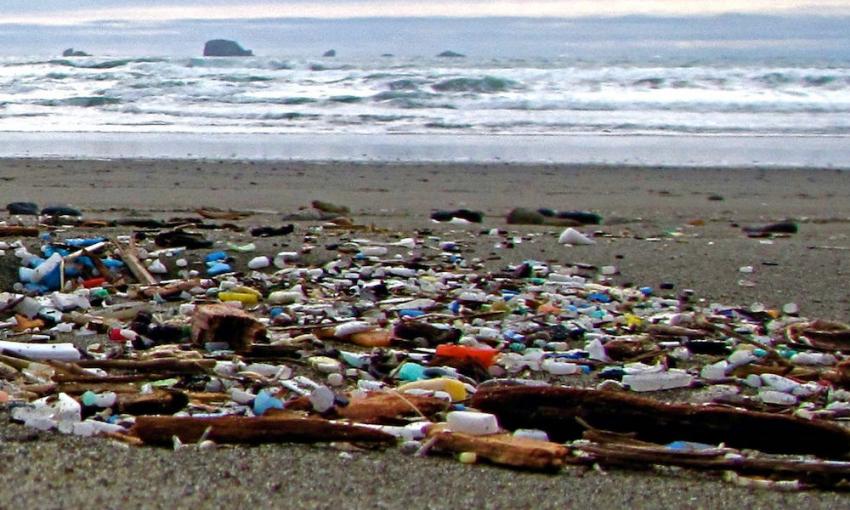




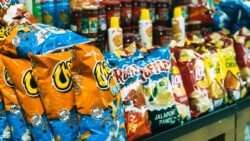
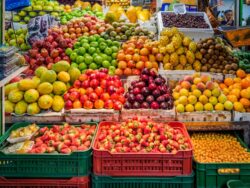

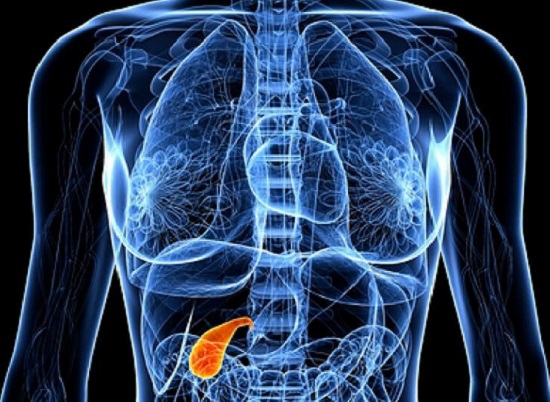

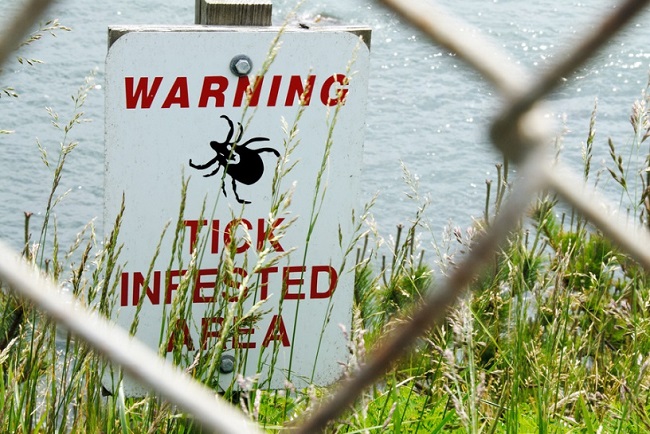
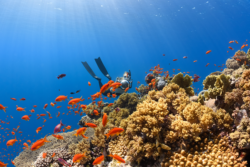

Those forever chemicals —
Gillian Miller, senior scientist with the Ecology Center:
“Spreading biosolids or sewage sludge where we grow food means some PFAS will get in the soil, some will be taken up by plants, and if the plants are eaten, then that’s a direct route into the body.”
These sludges are spread around the world, on crops, on open land. Oh, the human inventions. I was in West Texas when sludge from the east coast came on our, and the Texass politicians thought it was A-okay to spread that “waste” all over the desert and high sierra.
Then we have the hog industry (sic) murdering people —
from Democracy Now —
In eastern North Carolina, residents are battling with one of the state’s largest industries: hog farms. Last week, North Carolina lawmakers passed House Bill 467, which limits the damages that residents could collect against hog farms. The billion-dollar industry is primarily clustered in the eastern part of the state, where hog farms collect billions of gallons of untreated pig feces and urine in what are essentially cesspools, then dispose of the waste by spraying it into the air. Residents living in the area of the spray complain of adverse health effects and odor so bad that it limits their ability to be outdoors. For more, we speak with Naeema Muhammad, organizing co-director for the North Carolina Environmental Justice Network, and Will Hendrick, staff attorney with the Waterkeeper Alliance and manager of the organization’s North Carolina Pure Farms, Pure Waters campaign.
In an investigation into the industry, filmmaker Mark Devries used drones to capture aerial footage of several massive facilities that supply pigs for Smithfield Foods. He spoke with Steve Wing, associate professor of epidemiology at the University of North Carolina’s Gillings School of Public Health, who described what happens in the facilities.
STEVE WING: The waste falls through the floors. It’s flushed out into an open pit, like a cesspool. It’s easy for a big hog operation to have as much waste as a medium-sized city. Of course, the pit will fill up, so it has to be emptied. And they’re emptied by spraying the liquid waste.
MARK DEVRIES: Yes, you heard that right.
STEVE WING: If you’re familiar with a garden sprayer, they’re gigantic versions of that. So they’re making droplets and fine mists out of this liquid waste. And that can drift downwind into the neighboring communities.
+–+
It’s all natural (sic).
These ‘Forever chemicals’ accumulate in humans —
PFAS, also known as “forever chemicals” due to their persistence in humans in nature — meaning they don’t break down and can accumulate over time — are toxic to humans.
“Studies link the chemicals to kidney and testicular cancer, high cholesterol, high blood pressure, pre-eclampsia in pregnant women, low birth weights and decreased vaccine response in children. The chemicals may also cause thyroid disease, obesity, reduced fertility and hormone suppression.
PFAS make their way into biosludge when industries that use the chemicals to make products resistant to water, stain and grease dump the chemicals into public sewer systems. PFAS and other industrial chemicals end up at wastewater treatment plants where they’re combined with human waste and made into semi-solid sludge.”
+–+
Err on the side of caution, well, let’s err on the side of sanity, err on the side of precaution, err on the side of “don’t make it if it isn’t fully tested . . . . ”
All those human errors, easily anticipated, with a systems thinking approach. Life on earth, well, it can be tough, for sure — try getting a cup of clean water in the places where billions of people live under the systems of greed, money making, profits at any cost!
And, this piece, as it should be, is a peak into the entire story of the chemicals created by “scientists” that have run roughshod over humankind, nature in general, and as it should NOT be a textbook of all the “natural” poisons on planet earth, or those cooked up in labs, put side by side.
Am I to put down all the poisons and prions and neurotoxins made in nature that kill? Not the point of this piece or the series, Walking the Wrack Line.
The two most toxic chemicals for humans, that we know of, are botulinum toxin and tetanospasmin. Botulism is caused by botulinum toxin, which is a protein and neurotoxin produced by bacteria spores. Tetanospasmin is a neurotoxin produced by bacteria that causes Tetanus.
That wasn’t part of the schema in this short piece — to explore all the possible toxins and poisons on planet earth.
Here, on the Oregon Coast, we have many toxins as part of “nature’s bounty.” Domoic acid (DA) is a kainic acid-type neurotoxin that causes amnesic shellfish poisoning (ASP). It is produced by algae and accumulates in shellfish, sardines, and anchovies. When sea lions, otters, cetaceans, humans, and other predators eat contaminated animals, poisoning may result.
We have warnings about razor clam harvesting as I write this.
I’m glad readers are willing to add to knowledge, but to create a false balance or equivocate is senseless. We are studying more and more carcinogens in foods, what we drink, breathe, absorb. Slice of cheddar cheese? “Our work showed that casein is the most relevant cancer promoter ever discovered.” -Dr. T. Colin Campbell, PhD. “Initiation occurs when chemicals or other agents attack the genes of normal cells to produce genetically modified cells capable of eventually causing cancer.”
So, casein is a milk protein — a cancer feeder. Sugar, too.
Most of these I have encountered in nature —
death cap mushroom;
rosary pea;
the puffer fish, comprising a family called Tetraodontidae, the golden poison frog, Phyllobates terribilis, is the most lethal. In fact, it’s the most poisonous vertebrate: the poison in one frog’s skin can kill 10,000 mice, between 10-20 adult humans, or two African bull elephants. Their poison is called a batrachotoxi;
manchineel tree;
hooded pitohui;
Choresine beetles
Of course, the smallest killer, and greatest killer in “nature” — cyanobacteria. This name describes an entire phylum of bacteria, also known by the misnomer “blue-green algae” (algae are eukaryotes while bacteria are prokaryotes).
These prokaryotes are responsible for the greatest mass extinction event in history: the Great Oxygenation Event 2.3 billion years ago. Before that time, Earth’s atmosphere was oxygen-poor, but this bacteria’s unique ability to perform photosynthesis on the folds of the cell’s outer membrane (thought to be the precursor to chloroplasts in plants), created so much oxygen that nearly all anaerobic organisms died off.
We see cyanobacteria wreaking havoc on a great scale when “algal blooms” in oceans and lakes pollute the water. Cyanobacteria can produce neurotoxins, cytotoxins, endotoxins, and hepatotoxins, collectively called cyanotoxins.
Yes, we have many many collective issues to work on, for sure, and the world is a toxic oyster, in many ways.
Weigh the risk-benefits of life on earth, and then you can equivocate and say, well, “lead is a naturally occurring metal, so what’s the big deal with lead-based paint and lead drinking water pipes.”
Interesting thought processes out there.
I’d rather spend human lifetime hours making the world a better place, with true science over marketing, with as much transparency as possible, and, yes, we have so much to do with resource collapses, water shortages, extreme weather events, human-made diseases, including the number one — war and economic sanctions.
There are tens of thousands of activists, teachers, thinkers, and, yes, scientists who deploy a “do no harm” SOP, and certainly hope for a more robust precautionary principle application in the world. And I’ll stick with them. Environmental Working Group is just one of hundreds tracking ag and chemicals —
KNOW YOUR ENVIRONMENT. PROTECT YOUR HEALTH. — https://www.ewg.org/
Ahem! Pardon me. But there are NATURAL pesticides in most plants that protect them from insect infestation. And those natural pesticides – oxalates, perchlorate, lectins, purines, etc. – are arguably way worse than the man-made pesticides.
Oxalates are like a virus. They hijack the digestive system and ruin it. Oxalates are eaten by humans in plant food. It is an abrasive that wears down the mucosal lining of organs so that one ends up with leaky gut. Once you have leaky gut, foods that are not digested due to lack of enzymes as we age, end up in our bloodstream, causing autoimmune reactions and metabolites (non-nutrients). Metabolites can be good or bad but are non-nutrients. These non-nutrients, combined with exposure to mold, again from plants like cantaloupe, and a vitamin deficiency of B-6 and calcium, can end up producing oxalate in our bodies that ruin joints, organs, cause cancer, heart attacks, etc.
In other words, it is not only man-made pesticides but self-made pesticides in our bodies that wreak havoc on our health. When plants are grown in fertilizer, even organic plants, the enzyme that controls oxalates is neutralized. Then we eat the plant without that critical enzyme. Moreover, when we go to a dentist for a root canal we are given antibiotics that wipe out the enzyme (oxalobacter formigenes) that controls oxalates. We end up eating poison and making poison in our bodies. Some of these metabolites can end up causing cancer.
Plants have many more natural pesticides than man-made.
Andes here it goes, the Salem (Oregon) legislature held a “meeting,” via Zoom (??) yesterday (May 18) to have a bunch of bureaucrats with cushy jobs, retirements and, now, with no public in their faces confronting them, and alas, this is where the state of citizens fighting for sanity and against poisons is now: sending in chatroom comments, if they aren’t scrubbed or barred.. Here, a very string of emails, with names removed, in response to this dog and pony show. All members of my county fighting the aerial spraying of Agent Orange type chemicals:
A. 1. There were eight guest speakers: six agency folks spoke about how well everything is working now and two MD’s suggested some improvement to pesticide use might be beneficial.
2. Rep. Jami Cate (Lebanon) ate up the clock asking questions she knew the answers to in order to allow the government-six speakers more time
3. No other Rep asked any questions of anyone
4. As best I could tell, six of the ten committee members were in attendance. Some of the six did not attend the entire hearing.
5. Rep Courtney Neron is not a member of the Committee but introduced the subject at the hearing and was an obvious supporter of a serious investigative approach to seeking information.
Unfortunately, this was not a serious look at a serious question but rather an opportunity for the agencies listed below to toot their own horn:
· Oregon Dept. of Agriculture (the speaker, Alexis Taylor actually said, “Drift is not tolerated”)
· OSHA, Michael Wood
· Oregon Health Authority, Ali Hamade
· Oregon State – Kaci Buell, talking about Integrated Pest Management
· Oregonians for Food and Shelter, Katie Murray
By the time the opposing view was invited to speak, time was running out.
· New York State Dept. of Health, David Carpenter (specific health issues related to the use of pesticides, especially children)
· OR Pediatric Society, Shaili Rajput
I checked Rep. Cate’s ORESTAR account. Below is a partial list of financial contributors. She is most certainly doing her job on their behalf, you gotta give her that.
· Oregon Loggers PAC
· PGE
· OR Beverage Recycling Coop
· Pacific Corp
· Union Pacific RR
· Willamette Valley Vineyards
· Dairy PAC
· International Paper PAC
· Oregon Truck PAC
· Cascade Timber Consulting
· Oregon Soft Drink PAC (she drank from a Coke can during the meeting just like they do in the movies for product placement & promotion 🙂
· Weyerhaeuser
· Oregon Fam Bureau PAC
· Seed PAC
· Oregon Insurance PAC
· … and more, many more
Another day in Salem.
B. Good points, N. It was a sham. Dumbed down, and these folk talk to us as if we are in elementary school. Oh well, per Zoomcrap, I was able to multitask: write a blog and do some research.
Paul H
C. Samo, samo. No surprise here. Thank you, N, for suffering through this charade for us. C
D. I surely agree how unsatisfactory it all is. But the hearing is meant to force the topic to be brought up and not ignored so more protections can be achieved. This hearing wouldn’t have been allowed at all if Rep. Witt was still the Chair. As we all know, change isn’t handed out for free. It takes all of us doing our parts. Onwards, L
E. Thanks N for sitting through this.
The hearing was/is a sham, as it’s happened over and over throughout the years(to no avail). Protection isn’t going to be achieved through them, we’re going to have to do it ourselves, as agency people are brainwashed and elected officials are bought off. This was a charade to once again make it look like they are trying to do something about this problem, when they have no intention of doing any such thing. Change isn’t handed out for free, and it will be even harder to make change now that the traitor groups have signed that MOU and the legislature has signed it into law. E
F. Thanks N, for the important role you took on, as our eyes and ears yesterday. I no longer have the stomach to attend these types of hearings that give the floor (and my dignity) to arrogant elected officials and bureaucrats, with minimal lip service to “our side”. It’s one reason I defected from “conventional activism” to a Community Rights ethos, where The People rise up to claim, assert and grow our collective power. While I am grateful for the unity that is the anti-pesticide sentiment, it’s clear we have different, sometimes oppositional strategies.
I do believe there is one way forward, to defeat one unifying common issue/enemy: STATE PREEMPTION*, on which ALL justice-seeking groups can work together. State preemption denies ALL groups regardless of issue, the resolutions/justice we are ALL seeking. Whether we want to ban pesticides, raise the minimum wage, provide for the public safety, etc., state (and federal) preemption stands as a gatekeeper to deny our efforts… did someone say, “That’s not very democratic?” M
+–+
Note: These are mostly women at this hearing, and, the comments come from mostly women, as well. Gray Panthers, in effect. This theater of the absurd is amazing, still, to me, another Gray Panther (64). But I have been in this rodeo since age 15 or so fighting developers in Tucson from bulldozing over saguaros and huge swaths of dynamic ecosystems that is the Sonora.
Then on and on — coral reefs around Mexico and Central America and Vietnam. Working on forest destruction. On dams that have destroyed entire salmon runs. On social justice tied to indigenous people’s having a right to their ancestral lands, jungles, forests, etc. Journalism and then planning graduate degree, and here we are, at no crossroads, but a crisscross of laws that protect cancerous ideology, cancerous products, poisons to the unborn, to us all. THose “laws”?
Written by the industries’ lawyers, MBAs, CPAs, techno whizzes, and lobbying arms.